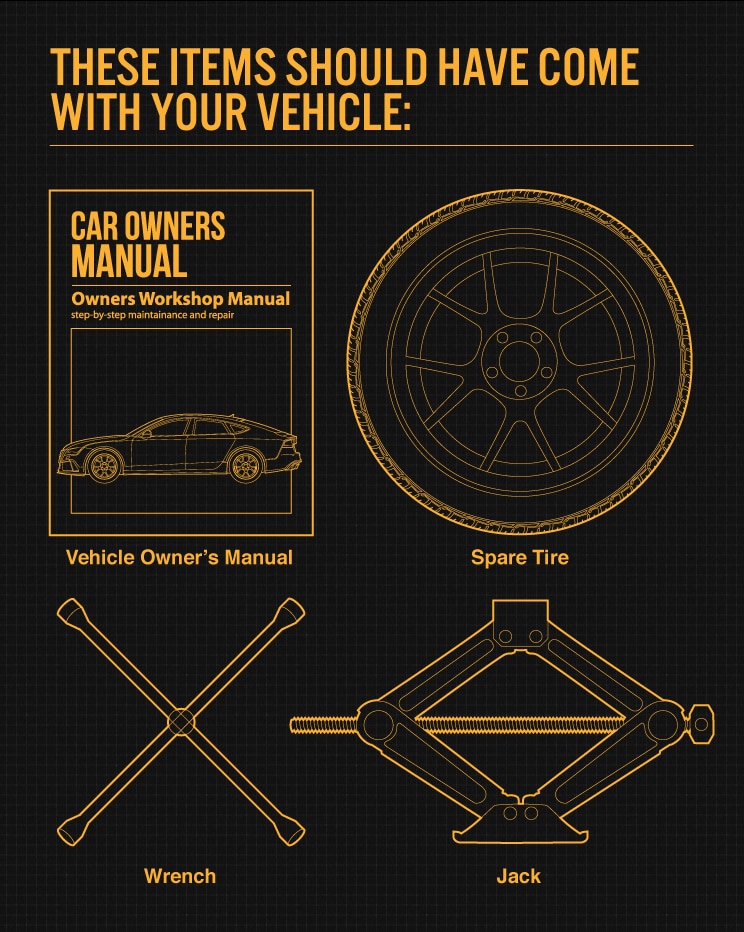We can't find the internet
Attempting to reconnect
According to Ask Ai www.iAsk.ai:
How to Properly Change a Flat Tire
Changing a flat tire is an essential skill for any driver. Here’s a detailed step-by-step guide to help you through the process safely and effectively.
1. Find a Safe Location As soon as you realize you have a flat tire, do not abruptly brake or turn. Gradually reduce your speed and look for a level, straight stretch of road with a wide shoulder or an empty parking lot. Avoid changing your tire on narrow shoulders near oncoming traffic.
2. Turn on Your Hazard Lights Activate your hazard lights immediately to alert other drivers that you are stopped and may be in need of assistance.
3. Apply the Parking Brake Once you have found a safe spot, put your vehicle in park and engage the parking brake to prevent it from rolling while you change the tire.
4. Apply Wheel Wedges Place wheel wedges in front of or behind the tires to further secure the vehicle. If you’re changing a rear tire, place them in front of the front tires; if it’s a front tire, place them behind the rear tires.
5. Remove the Hubcap or Wheel Cover If your vehicle has hubcaps covering the lug nuts, use the flat end of your lug wrench to pry off the hubcap before lifting the vehicle with the jack.
6. Loosen the Lug Nuts Using your lug wrench, turn each lug nut counterclockwise until they break their resistance (about ¼ to ½ turn). Do not remove them completely yet.
7. Place the Jack Under Your Vehicle Identify where to position the jack according to your vehicle’s owner manual—usually beneath the frame next to the flat tire—and ensure it is placed securely.
8. Raise Your Vehicle with the Jack Pump or crank the jack until the flat tire is about six inches off the ground. Ensure no body parts are under or near the vehicle during this process.
9. Unscrew All Lug Nuts Completely Now that they are loosened, remove all lug nuts completely by hand and set them aside in a safe location.
10. Remove the Flat Tire Grip the tire by its treads and pull it gently towards you until it comes free from its hub. Lay it on its side so that it does not roll away.
11. Mount the Spare Tire on Lug Bolts Align your spare tire with lug bolts and push it onto the hub until you can see some of these bolts through rim holes.
12. Tighten Lug Nuts by Hand Place each lug nut back onto its respective bolt and tighten them by hand as much as possible without using tools at this stage.
13. Lower Your Vehicle Slightly Use your jack to lower your car until just enough weight is on the spare tire so that it doesn’t spin freely but isn’t fully bearing down on it yet.
14. Tighten Lug Nuts with Wrench With full weight now resting on your spare, use your wrench to tighten each lug nut clockwise as much as possible using a star pattern for even tightening across all nuts.
15. Lower Your Vehicle Completely Bring your vehicle all way down to ground level and remove jack carefully from under it.
16. Replace Hubcap (if applicable) If applicable, replace any hubcap that fits over your spare tire back into place.
17. Check Pressure in Spare Tire Before driving away, check that your spare tire is properly inflated according to manufacturer specifications (typically around 60 psi for temporary spares).
18. Return All Equipment and Supplies to Your Vehicle Gather all tools used during this process—jack, lug wrench, wheel wedges—and stow them properly in your vehicle before driving off.
19. Take Your Flat Tire for Repair Since spare tires are often not designed for long distances or high speeds, drive cautiously until you can have your flat repaired or replaced by a professional technician.
Top 3 Authoritative Sources Used
- Bridgestone North America: A leading manufacturer of tires providing comprehensive guides on maintenance including how-to instructions for changing tires.
- AAA (American Automobile Association): An organization known for providing roadside assistance and automotive services; offers educational resources about car maintenance.
- NHTSA (National Highway Traffic Safety Administration): A government agency focused on road safety which provides guidelines and safety tips related to vehicles including proper procedures for handling emergencies like flat tires.



